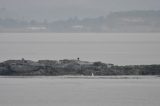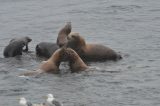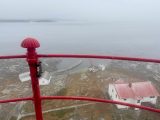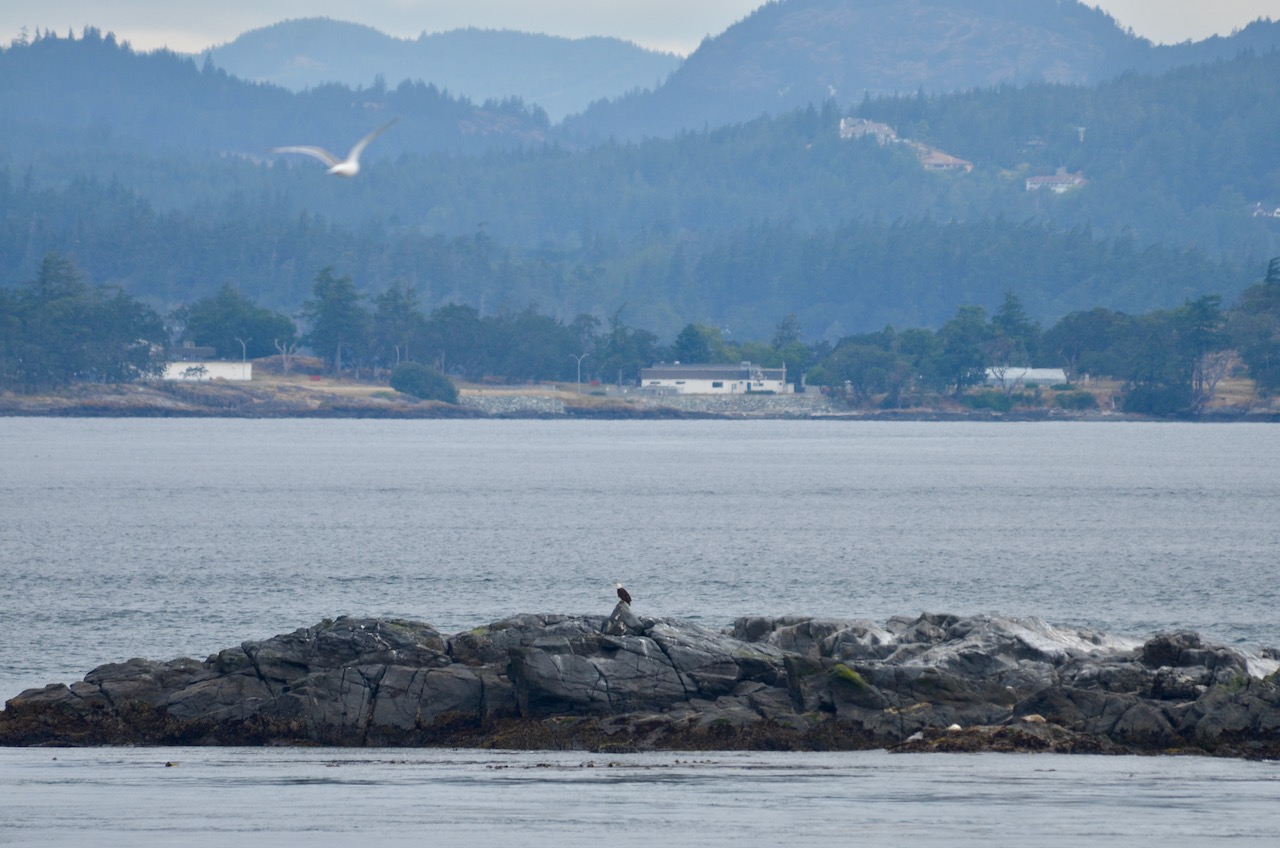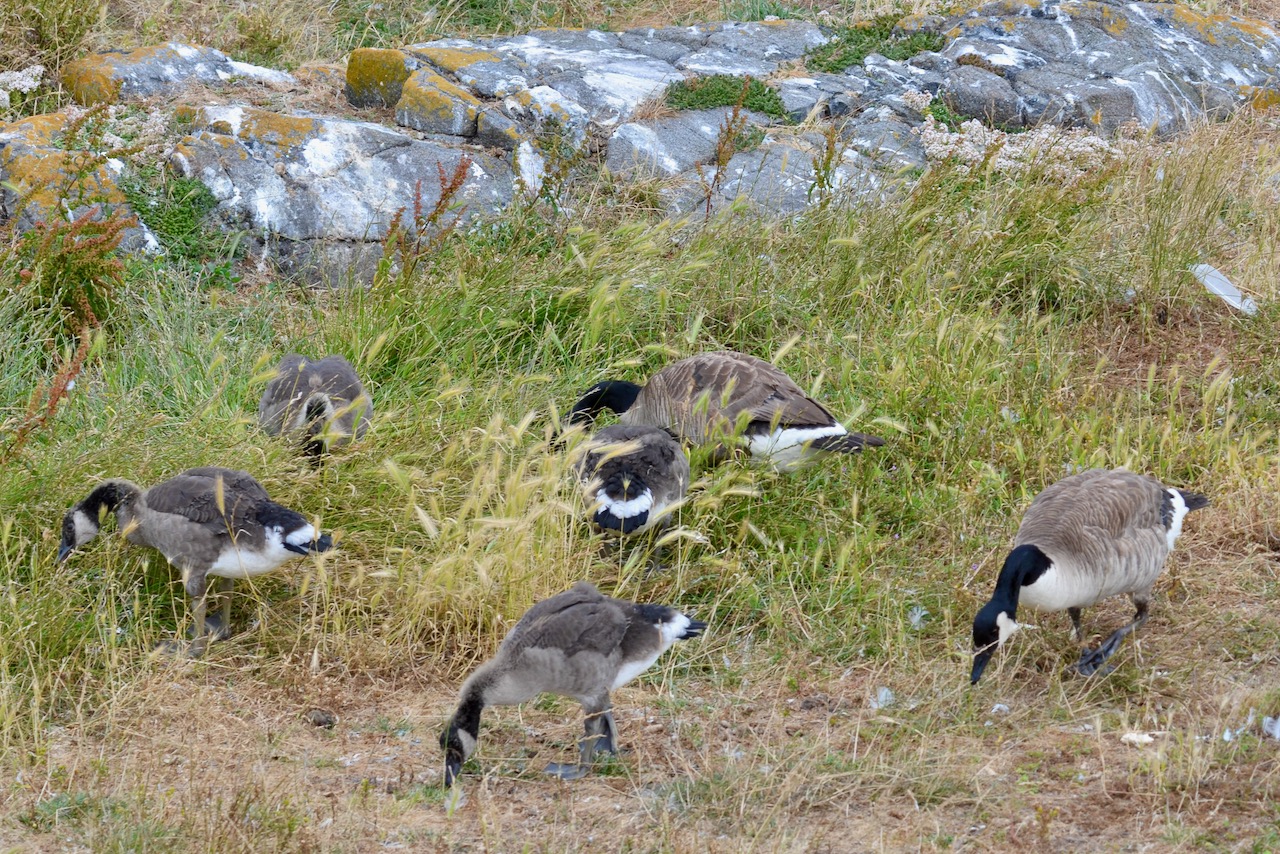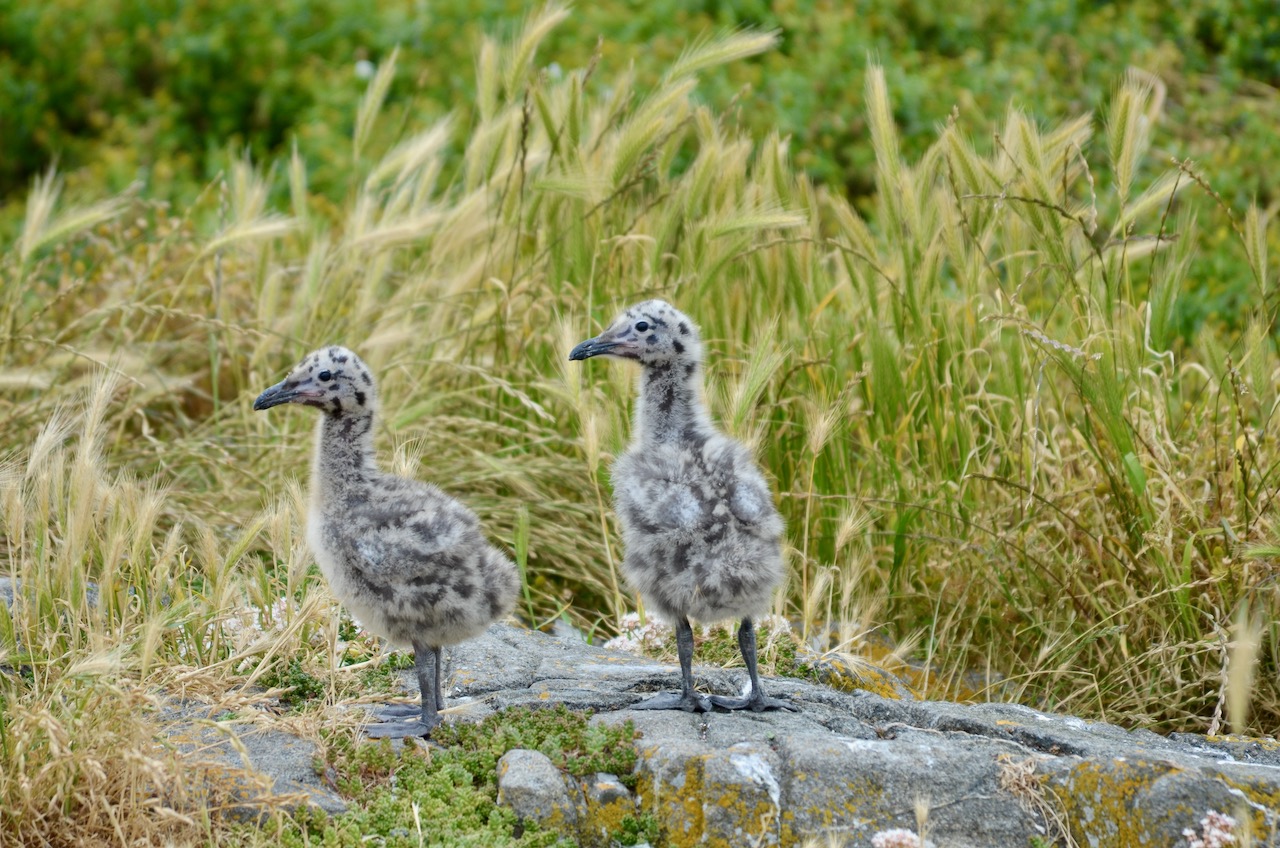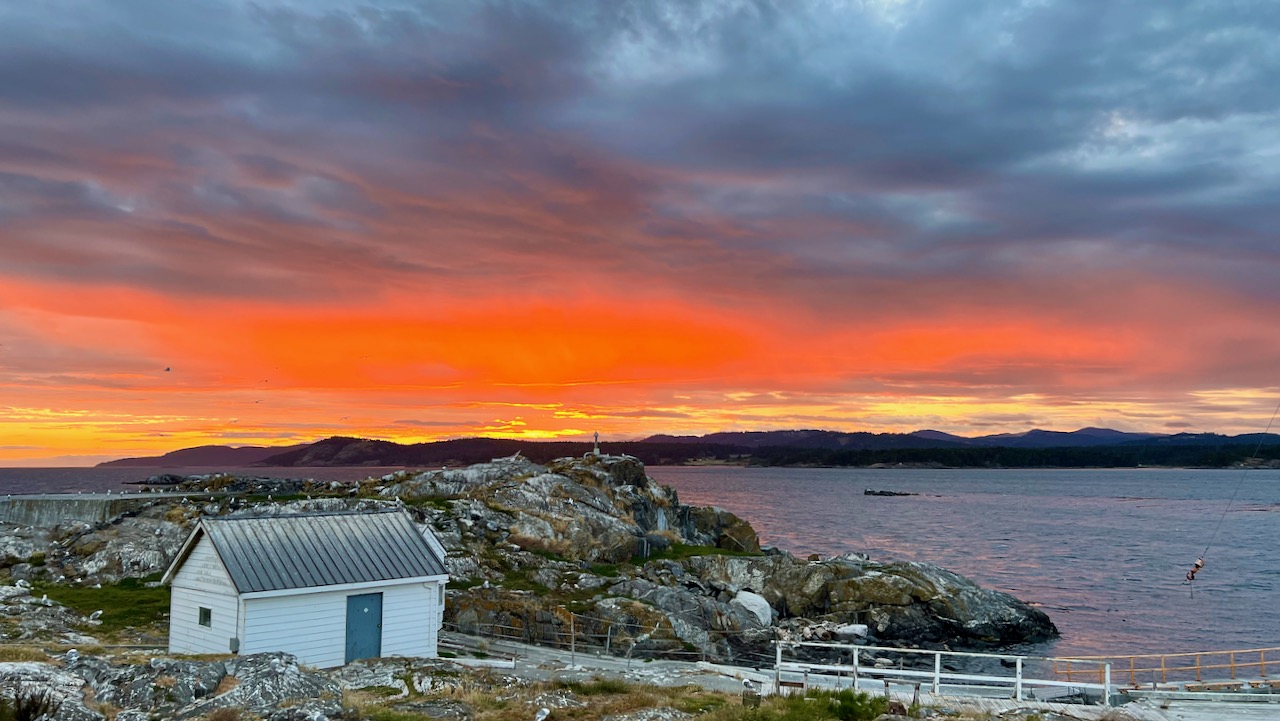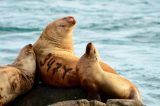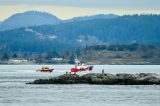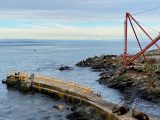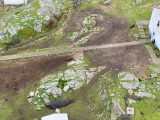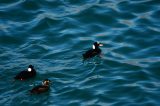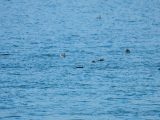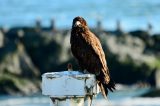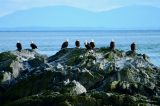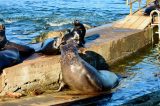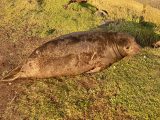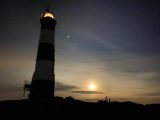Interests of Stakeholders and Options for Establishing a Marine Protected Area at William Head – A Discussion Paper
DRAFT
June 1996
by Julie Barr , Westwater Research
Institute for Resources and Environment
University of British Columbia
208A – 1933 West Mall
Vancouver, Canada
V6T IZ2
voice telephone: (604) 822-9224 fax telephone: (604) 822-5357 E Mail: jbarr@capcollege.bc.ca
A Discussion Paper
EXECUTIVE SUMMARY
This report has not yet been subject to external review. Therefore, the author requests that any errors or omissions be brought to her attention and that, before quoting from the report, written permission be obtained. This report represents the opinion of the author alone and should not be considered to reflect the policy or position of World Wildlife Fund or Westwater Research Centre.
The purposes of this discussion paper are twofold. The first is to introduce the marine protected area concept to William Head, located on the southern tip of Vancouver Island. The second is to report in a preliminary fashion on the interests of stakeholders in the William Head area.
The specific objectives of this discussion paper are:
- 1) to provide background information on William Head and its surrounding areas;
-
- 2) to define the term marine protected area (MPA);
-
- 3) to identify why MPAs are considered to be important;
-
- 4) to preliminarily identify William Head area stakeholders, and their interests; and
-
- 5) to identify possible options for meeting the objectives of those stakeholders.
William Head is an isthmus located on the southern tip of Vancouver Island Historically, this site has been used for many purposes. However, since 1959, the land area has been used by the Correctional Service of Canada as a penitentiary.
Since its establishment, the William Head Institution has provided de facto protection of marine life around William Head from fishers and divers. Recent dives around William Head have revealed this area to be very productive with high biological diversity. For example, Northern Abalone (Haliotis Kamtschatkana), a commercially extinct species in British Columbia, are possibly much larger and more abundant around William Head than anywhere else on the West coast.
Marine protected areas have a number of environmental, economic, and social benefits. Some of the recognized benefits of MPAs include: protection of population age structure; recovery of marine populations in depleted regions; protection of biodiversity; development of unique opportunities for education and scientific research; enhancement of recreational activities; and significant opportunity for economic development in such areas as tourism (Winfield, 1995).
Through preliminary discussions, the interests of several community stakeholders in Metchosin, William Head, Pedder Bay, and Beecher Bay involved in the establishment of a MPA around William Head were identified. From these discussions, possible options for establishing a MPA meeting their objectives were considered. They include: maintaining the status quo; establishing a non marine harvest refugia MPA; or establishing a marine harvest refugia MPA.
Before any of these options can be implemented, further discussions with community stakeholders are required.
Page 1
TABLE OF CONTENTS
| EXECUTIVE SUMMARY |
|
1 |
| TABLE OF CONTENTS |
|
2 |
| ACKNOWLEDGEMENTS |
|
4 |
| 1.0 INTRODUCTION |
|
5 |
| 2.0 BACKGROUND INFORMATION ON WILLIAM HEAD AND ITS SURROUNDINGS |
|
6 |
| 3.0 WHAT ARE MARINE PROTECTED AREAS? |
|
8 |
| 4.0 WHY ARE MARINE PROTECTED AREAS IMPORTANT? |
|
9 |
| 5.0 STAKEHOLDERS AND THEIR INTERESTS |
|
10 |
|
5.1 William Head Institution |
10 |
|
5.2 Lester B. Pearson College |
10 |
|
5.3 Metchosin Town Council |
11 |
|
5.4 Pedder Bay marina and Trailer Park |
11 |
|
5.5 Beecher Bay First Nation |
11 |
|
5.6 Department of National Defence |
12 |
| 6.0 OPTIONS FOR THE FUTURE |
|
13 |
|
6.1 Status Quo |
13 |
|
6.2 Non Marine Hrvest Refugia MPA |
13 |
|
6.3 Marine Harvest Refugia |
14 |
| 7.0 CONCLUSION |
|
15 |
Page 2 – 3
ACKNOWLEDGEMENTS
The author gratefully acknowledges the advice and assistance of a large number of individuals and organizations including: Richard Paisley, Westwater Research Centre; Scott Wallace, Institute for Resources and Environment, U.B.C.; Randie Scott and Michael Gallagher, William Head Institution; Garry Fletcher, Lester B. Pearson College; Sean Moore, Pedder Bay Marina; Patricia Chipps, Beecher Bay First Nation; John Rans and Gerry Mellott, District of Metchosin; and community resident Peter Chettleburgh. This discussion paper was funded in part by the World Wildlife Fund as part of their Endangered Spaces Campaign and by the Westwater Research Centre.
Page 4
1.0 INTRODUCTION
This report has not yet been subject to external review. Therefore, the author requests that any errors or omissions be brought to her attention and that, before quoting from the report, written permission be obtained. This report represents the opinion of the author alone and should not be considered to reflect the policy or position of World Wildlife Fund or Westwater Research Centre.
The purposes of this discussion paper are twofold. The first is to introduce the marine protected area concept to William Head, located on the southern tip of Vancouver Island. The second is to report in a preliminary fashion on the interests of stakeholders in the William Head area.
The specific objectives of this discussion paper are:
- 1) to provide background information on William Head and its surrounding areas;
- 2) to define the term marine protected area (MPA);
- 3) to identify why MPAs are considered to be important;
- 4) to preliminarily identify in the William Head area stakeholders, and their interests; and
- 5) to identify possible options for meeting the objectives of those stakeholders.
This project, funded by the World Wildlife Fund as part of their Endangered Spaces Campaign, focuses on identifying the interests of community stakeholders in relation to the possibility of establishing a MPA at William Head.
The project consists of three phases. The first phase included the collection of information, and involved literature searches, identification of stakeholders, a site visit, and discussion with community stakeholders regarding their interests.
Phase two involved incorporating the collected information into this discussion paper, which outlines the interests of stakeholders and poses possible solutions for meeting their objectives.
The third phase will involve sending out copies of this paper to several stakeholders for their approval and incorporating their feedback into the final report. This phase may also include organized site visits.
Page 5
2.0 BACKGROUND INFORMATION ON
- WILLIAM HEAD AND ITS SURROUNDINGS.
William Head is an isthmus located on the southern tip of Vancouver Island. It extends 48 degrees 24′ North, 123 degrees 32′ West into the Straight of Juan de Fuca. The land area consists of exposed volcanic rock shoreline with the dominant geological characteristic being steep bedrock. It is surrounded on the northwest by Quarantine Cove, which is part of Parry Bay; on the southwest by Pedder Bay; and on the West by forested Department of National Defense land (William Head Institute, 1995) (refer to Appendix A and B).
The shoreline surrounding William Head is a rich and productive area due to the upwelling wave action from the Straight of Juan de Fuca and current patterns around the Head. Due to this productivity, biological diversity of marine life is high in and amongst its shores. Preliminary dives off William Head by Scott Wallace, Institute for Resources and Environment, U.B.C., revealed a population of Northern Abalone possibly much larger and more abundant than anywhere else on the West coast. In addition, there is an abundance of marine mammals and plants, crustaceans, echinoderms, sponges, kelp beds, seaweeds, and fishes.
The land area of William Head has had many historical uses. In 1862, Robert Weir became the first owner of William Head. He and his family resided there and managed a large sheep and cattle farm. >From 1893 to 1959 the site was used as a quarantine station for ships and passengers to control the spread of communicable disease. The only exception to this was during the wartime years of 1939 to 1945, when William Head became a training ground for W.W.II naval officers (Burns, 1982).
Since 1959, the land area of William Head has been used by the Correctional Service of Canada as a penitentiary (refer to Appendix C). William Head Institution is classified as a medium security facility with two hundred and twenty inmates and one hundred and fifty staff. The facility has a very progressive structure when compared to conventional correctional systems. Inmates live in an environment promoting responsible, socially acceptable behavior through moderately restricted freedom of movement (William Head Institute, 1995). Educational, vocational, recreational, and environmental activities are offered at the Institute and all of the inmates are encouraged to take part in their area of interest.
Over the last few years, the William Head Institution has actively involved both staff and inmates in programs to make the facility more “environmentally friendly”. An advanced recycling program has taken effect, significantly reducing waste disposal services. With the help of engineers, inmates have been involved in the design and construction of an on-site sewage treatment plant. Sludge produced from this plant will be used as fertilizer on non-agriculture crops.
An inmate fishing program has also developed as part of the Institution’s recreational activities. Twenty two of the two hundred and twenty inmates have fishing licences and a further seven are allowed to fish as an aboriginal right. The Institution has restricted fishing to a wharf located on the West side of William Head. The wharf was originally constructed by a group of inmates and is used in the late spring, summer, and early fall for salmon fishing. Due to high wave and wind action in the winter months, the wharf is taken out of the water to avoid damage.
page 6
Since the construction of the prison in 1959, most local boaters have avoided fishing near the Institution’s shores. This is due to the public’s incorrect perception that the prison has imposed a minimum distance around William Head which is off limits to boaters. Diving around William Head has only been permitted with approval from the Institution and therefore very little extraction of marine life due to SCUBA diving has occurred. As a result, the Institution has already indirectly provided de facto protection of marine life around William Head since its establishment.
Situated to the South of William Head is a group of islands referred to as Race Rocks. In 1980, with the support of Lester B. Pearson College and Metchosin residents, these islands were designated an ecological reserve. Pearson College is now the official custodian of the area and Garry Fletcher, a member of the College’s biology faculty, has been appointed warden. Since 1990, all waters inside the 20 fathom contour surrounding Race Rocks have been closed to sport fishing for all fish species except salmon and halibut. This action was taken to protect all resident marine species within the reserve.
Adjacent to William Head is Pedder Bay in which Lester B. Pearson College and Pedder Bay Marina are situated. Pearson College is an internationally acclaimed private school actively involved in a diving program in the outer part of Pedder Bay, Rocky Point, Bentinck Island, Beecher Bay, and Race Rocks. Students have been involved in the identification and recording of the marine life found in these areas. In the last few years this group has noticed the significant impact that commercial and sports fisheries have had on the underwater invertebrate populations. This has been especially evident in the sea urchin, abalone, swimming scallop, and octopus populations. However, at Race Rocks Ecological Reserve, students have seen a stability of species since the subtidal fisheries closure in 1990 (Fletcher, pers. comm.).
The Pedder Bay Marina and Trailer Park is one of several marinas owned and operated by the Oak Bay Marine Group. This is a medium-sized marina catering primarily to sports fishers. The majority of their clientele fish the West side of Pedder Bay up to Eemdyk Passage and out to Race Rocks. At the marina is a map showing ten “hot spots” for fishing. It appears that only one “hot spot” exists on the East side of Pedder Bay: off the tip of William Head (Pedder Bay Marina). Although salmon fishing here is variable, it can apparently be exceptional at times due to the upwelling and current patterns circulating around the head.
Beecher Bay in which the Beecher Bay Marina is situated is located to the East of Pedder Bay. Beecher Bay Marina is a medium sized marina owned and operated by the Beecher Bay First Nation for sport fishing purposes. The clientele of the marina fish predominately up the East and West side of Beecher Bay to Church Island and Beechey Head. Relatively few fishers from this marina appear to go to William Head to fish.
Inside Beecher Bay is an area referred to as the “Bedfords”, which consists of West Bedford Island and Large Bedford Island. These islands are located on the East side of the Bay and are closed to all commercial and recreational fishing for six months of the year for conservation purposes.
Page 7
3.0 WHAT ARE MARINE PROTECTED AREAS?
The term “marine protected area” or “MPA’ is a generic term describing a wide range of oceanic protected areas.
In 1986 the United Nations “Man and the Biosphere” Program established a definition of the term MPA and the purpose for establishing MPAs:
- “…….. the term MPA refers to: any area of intertidal or subtidal terrain, together with its overlying waters and associated flora, fauna and historical and cultural features, which has been reserved by legislation to manage and protect part or all of the enclosed environment …… “
- “…the primary goal of establishing MPAs is to: provide for the protection, restoration, wise use and understanding and enjoyment of the marine heritage of the world, in perpetuity, through the creation of a global, representative system of MPA, and through the management of human activities that use or affect the marine environment ……. “
Within Canada, the potential exists to create a range of MPA types. These types vary in two ways. First, by the extent to which they conserve and/or protect the marine environment. Second, by the level of government which ultimately controls their establishment (Paisley, 1992).
Figure 1: Range of MPA Types in British Columbia
In British Columbia, the extent to which MPAs protect the marine environment ranges from protecting everything within the marine environment to protecting very little. An example of a highly protected MPA in British Columbia is “marine harvest refugia” which protect and restrict resource extraction of all marine species. There are only two marine harvest refugia in British Columbia: Whytecliff Park in West Vancouver and Porteau Cove in Howe Sound. A third site is now on the verge of establishment at Gabriola Passage in Georgia Strait (Paisley, 1992). Protecting these areas is significant for a number of scientific, ecological, cultural, and economic reasons.
Examples of MPAs in British Columbia that provide lesser protection include provincial marine parks, national marine conservation areas, and provincial marine ecological reserves. None of these MPAs fully protect marine resources from exploitation. However, they can meet certain educational and scientific objectives.
Page 8
4.0 WHY ARE MARINE PROTECTED AREAS IMPORTANT?
MPAs have a number of environmental, economic, and social benefits. MPAs make significant contributions to enhancing many areas of human interest including species protection, commercial and recreational fisheries, undisturbed sites for scientific research and educational programs, and opportunities for a wide range of non-consumptive recreational activities.
Some of the recently acknowledged benefits of MPAs further include:
- (1) complementing traditional fisheries management by allowing resident species to reproduce in an undisturbed environment and act as sources of recruitment and repopulation for exploited areas;
- (2) maintaining biomass and natural age structure of populations, thus protecting the reproductive potential of resident populations;
- (3) providing a safe haven for marine species, thus allowing for the maintenance of genetic diversity;
- (4) allowing unexploited populations to act as environmental insurance in case of resource management failures;
- (5) providing areas for scientific research and offering natural study areas and opportunities for educating students and community groups about the marine environment; and
- (6) enhancing economic development through non-disruptive activities, such as tourism.
Many of these benefits are thought to be maximized by marine harvest refugia. Appendix D, E and F provide a more in depth listing of the benefits of marine harvest refugia.
Page 9
5.0 STAKEHOLDERS AND THEIR INTERESTS
Through initial conversations with Garry Fletcher of Lester B. Pearson College, community stakeholders in Metchosin, William Head, Pedder Bay and Beecher Bay were identified (refer to Appendix G). Many of these stakeholders were then contacted and arrangements were made to meet with each group during a site visit to William Head. From these meetings, the preliminary interests of stakeholders in establishing a MPA around William Head were identified. The interests of each group are outlined below.
5.1 William Head Institution
- William Head Institution expressed significant interest in establishing a MPA around William Head for two reasons: conservation purposes and to enhance security around the facility.
- The Institution and its inmates have been adapting new methods for reducing their impact on the environment and, as a result, the facility is interested in involving inmates in programs that focus on stewardship and promoting an increased sensitivity to their surrounding environment. The formation of a MPA around the facility would further facilitate these objectives.
- Since the Institution has been in operation, there have been several inmate escapes and attempted escapes from the shores of the facility. As a result, the prison has a natural interest in finding new ways to enhance security and reduce the risk of additional escapes. At present, the prison has no way of regulating the number of boaters coming into the area or their proximity to the facility’s shores. Establishing a MPA that restricts resource harvesting could assist them in meeting security objectives.
- The Institution also has some interest in the continuance of the inmate fishing program currently established in William Head.
5.2 Lester B. Pearson College
- Lester B. Pearson College is an internationally acclaimed school actively involved in a diving program in the outer part of Pedder Bay, Rocky Point, Bentinck Island, Beecher Bay, and Race Rocks. For many years, students have extensively studied and recorded the marine life found in these areas; however, over the last few years, this group has noticed the significant impact that resource harvesting has on a number of invertebrate populations (Fletcher, pers. comm.).
- Pearson College has been the official custodian of Race Rock Ecological Reserve since its establishment in 1980. Garry Fletcher, a member of College’s biology faculty and coordinator of its diving program, has been appointed warden. In 1990, Race Rocks was closed to all subtidal fisheries. Since that time, students in the diving program at Lester B. Pearson College have seen an increase in species diversity, abundance, and size around Race Rocks Ecological Reserve (Fletcher, pers. comm.).
- Lester B. Pearson College has expressed great interest in establishing a MPA around William Head for three reasons: the protection of species biodiversity, particularly the underwater invertebrate populations (e.g.; sea urchin, abalone, swimming scallop and octopus); the
Page 10
- development of unique opportunities for education and scientific research; and the development of a stewardship role in the establishment and monitoring of a MPA around William Head.
5.3 Metchosin Town Council
- On behalf to its residents, the Metchosin Town Council has interests in preserving and conserving the marine environment, supporting the college’s diving program, representing the interests of Metchosin residents, and enhancing security around William Head Institution. The Metchosin Town Council met on Monday June 3, 1996 to discuss the possibility of establishing a MPA adjacent to William Head. The minutes from the meeting state that “Council will endorse the creation of a marine protected area around William Head with the exception of salmon fishing” (Town Council minutes, 1996).
- One of the Council’s mandates is to make decisions in favor of its community’s interests. As previously mentioned, inmates fish for salmon off a wharf located on the West side of William Head as part of the Institute’s recreational activities. In the Council meeting, it was stated that there is limited community support for prison programs, such as the fishing program. In addition, there is feeling among many Metchosin residents that the inmates at William Head Institution are living the “easy life”. As a result, the Councillors felt they were unable to advocate restricting Metchosin residents from salmon fishing in the area if inmates continued salmon fishing from the wharf.
- Another interest of Town Council is to consider opportunities for enhancing security around the prison. If the Institution were to restrict boats from entering the William Head area to increase security, the Council would support the prison’s decision. In these circumstances Town Council would not appear to have a problem with a total ban on fishing in the William Head area.
5.4 Pedder Bay Marina and Trailer Park
- Pedder Bay Marina and Trailer Park, owned by the Oak Bay Marine Group, caters primarily to sports fishers. Fishers from Pedder Bay Marina occasionally fish for salmon at the tip of William Head; however, the majority of their clientele appear to fish on the West side of Pedder Bay.
- The marina has three main interests. These include: conserving and preserving marine species to ensure sustained availability of resources for harvesting; ensuring the marina’s long-term financial success; and not unduly restricting the amount of coast available for recreational fishing opportunities.
5.5 Beecher Bay First Nation
- The Beecher Bay First Nation owns and operates the Beecher Bay Marina adjacent to Pedder Bay. Their business is supported primarily by sports fishers who charter boats for salmon fishing on the East and West sides of Beecher Bay. It appears that relatively few of the recreational fishers chartering boats from this marina fish at William Head.
- In general, the Beecher Bay First Nation has a number of interests. They include resolving First Nation land and sea claims, maintaining aboriginal rights to ocean resources, and preserving and protecting ocean resources to ensure availability for future generations.
Page 11
- The Beecher Bay First Nation also has an interest in supporting the interests of the Pedder Bay Marina due to the solidarity between the two marinas.
- Due to past conflicts, the Beecher Bay First Nation has an interest in not being involved in projects that have to be approved by the federal government.
5.6 Department of National Defence
- Department of National Defence (DND) land borders William Head to the West. Canadian Armed Force’s divers frequently dive for sunken artifacts around William Head and Parry Bay. DND has an interest in the establishment of an MPA around William Head to ensure the safety of these divers.
Page 12
6.0 OPTIONS FOR THE FUTURE
The objective of this section is to assess the interests of various stakeholders and try to identify options for meeting their interests. There are at least three options for the establishment of a MPA around William Head. They include: maintaining the status quo; establishing a non marine harvest refugia MPA; or establishing a marine harvest refugia MPA. Each option varies with respect to its ability to meet the interests of the stakeholders. This is discussed below.
6.1 Status Quo
- Maintaining the status quo would mean that the harvesting of salmon, rockfish, and invertebrates would continue as usual around William Head.
- Maintaining the status quo is unlikely to satisfy either the conservation or security objectives of William Head Institution on a sustainable basis as pressure to exploit ocean resources increases.
- Nor does it correlate with the interests of Pearson College: to protect species biodiversity, develop education and scientific research opportunities, or provide an opportunity for the college to take on a stewardship role in this area.
- The objectives of Metchosin Town Council, which are to conserve the marine environment, support the college’s diving program, represent the interests of Metchosin residents, and enhance security around William Head are also not well met by this option.
- Maintaining the status quo only partially meets one objective of Pedder and Beecher Bay Marinas, which is to not unduly restrict the amount of coast available for recreational fishing. However, it probably falls short in meeting the marinas’ other objectives: to conserve and preserve marine species, and to ensure the marinas’ long-term financial success.
- The objective of DND to preserve the area for diving is also not likely to be met by the status quo option.
6.2 Non Marine Harvest Refugia MPA
- One variation of this option would allow species-specific fishing (e.g. salmon fishing) to occur within a MPA around William Head.
- Establishing a non marine harvest refugia MPA would probably not meet the interests of William Head Institution in conserving the marine environment or enhancing security around the facility.
- Pearson College’s interest in protecting species diversity, particularly the underwater invertebrate populations, in developing opportunities for education and scientific research, and in becoming stewards in the establishment and monitoring of the area would not be facilitated. From the College’s experience at Race Rocks, where there are closures on all marine species except salmon and halibut, they have found that it is hard to monitor who is fishing illegally for bottom fish and fishing legally for salmon. The result is that many subtidal species are still being exploited in this reserve.
Page 13
- The objectives of the Metchosin Town Council to preserve and conserve the marine environment, support the College’s diving program, represent the interests of Metchosin residents, and enhance security around William Head Institution would only be partially met by this option. Since some of the Metchosin residents salmon fish in the area, establishing a non marine harvest refugia would allow fishing to continue. However, as seen at Race Rocks, where species-specific fishing occurs, there are problems with monitoring and enforcement.
- To establish a non marine harvest refugia would not meet Pedder or Beecher Bay Marinas’ objectives to conserve and preserve marine species to guarantee sustained availability of this resource and ensure the marinas’ long-term financial success. It would, however, meet one of the marinas’ objectives in allowing their clientele to continue salmon fishing around William Head.
- This option would not appear to satisfy the interest of DND, which is to provide a safe area around William Head for Canadian Armed Force divers.
- Marine Harvest Refugia MPA
- Establishing a marine harvest refugia MPA at William Head would restrict all consumptive use activities from occuring within the MPA’s boundary.
- By establishing a marine harvest refugia MPA at William Head, the conservation and security interests of William Head Institution would probably be met.
- In addition, the objectives of Pearson College to protect species diversity, develop opportunities for education and scientific research, and develop a stewardship role in the establishment and monitoring of an MPA around William Head would be facilitated.
- By establishing this option around William Head, the majority of the Metchosin Town Council’s interests which are to preserve and conserve the marine environment, support the college’s diving program, represent the interests of Metchosin residents, and enhance security around William Head Institution would be facilitated.
- The Pedder and Beecher Marinas’ objectives to conserve and preserve marine species, and ensure the marinas’ long-term success would be met to some degree by establishing a marine harvest refugia. Recent academic research has shown that marine harvest refugia enhance fishing outside the protected areas through the dispersal of resident fish and invertebrate species into adjacent regions. Therefore, creating a protected area could strengthen the marinas business by providing their clientele with an area abundant in fish year after year. On the other hand, this option would not facilitate their objective to provide as much of the coastline as possible for their clientele to fish. However, as previously mentioned, fish stocks outside the marine harvest refugia boundary could increase from fish dispersing from the protected area to adjacent regions thus improving fishing conditions for the marinas’ clientele overall.
- The objective of DND to provide a safe area for Canadian Armed Forces divers would be met by the marine harvest refugia option.
Page 14
7.0 CONCLUSION
The purposes of this discussion paper have been twofold. The first was to introduce the marine protected area concept to William Head. The second was to report in a preliminary fashion on the identity and interests of stakeholders in the William Head area.
The specific objectives of this discussion paper were:
- 1) to provide background information on William Head and its surrounding areas;
- 2) to define the term marine protected area (MPA);
- 3) to identify why MPAs are considered to be important;
- 4) to preliminarily identify in the William Head area stakeholders, and their interests; and
- 5) to identify possible options for meeting the objectives of those stakeholders.
Through preliminary discussions, the interests of several community stakeholders in Metchosin, William Head, Pedder Bay, and Beecher Bay involved in the establishment of a MPA around William Head were identified. From these discussions, possible options for establishing a MPA meeting their objectives were considered. They included: maintaining the status quo; establishing a non marine harvest refugia MPA; or establishing a marine harvest refugia MPA.
To guarantee the success of any MPA type it is important that the chosen MPA option have the support of community stakeholders.
This paper only provides the baseline information required for establishing a MPA at William Head. It is hoped that stakeholders will find this document useful in catalyzing further discussions.
Page 15
8.0 REFERENCES
Burns, Geoffrey. 1982. William Head – The Land – The History – The People. William Head Institution. Victoria, B.C.
Fletcher, Garry. personal communication
Hydrographic map chart # 3410. 1994. U.B.C.
McNally, Rand. 1994. Victoria City Map. AJmaps Canada Limited. Markham, Ontario.
Metchosin Town Council minutes for June 3, 1996.
Paisley, Richard. 1992. Marine Protected Areas (MPA) in British Columbia. Westwater Research Centre. University of British Columbia, Vancouver, B.C.
Pedder Bay Marina wall map showing fishing “hot spots”. Pedder Bay, B.C.
William Head Institution. 1995. William Head Institution Background.
Winfield, Nicholas. 1995. A Community Guardian Pilot Project at Mizecliff Park Marine Protected Area.
Page 16
